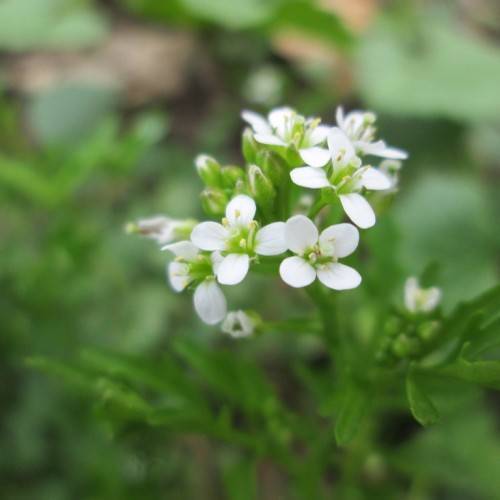
Woodland Bittercress
Cardamine flexuosa
Watering:
Minimal
Hardiness Zone:
Flowers:
Flowers
Sun:
Partial Shade
Leaf:
Yes
Growth Rate:
Low
Drought Tolerant:
Yes
Care Level:
Medium
watering
Two Leaf Toothwort should be watered regularly to keep the soil consistently moist but not soggy. Watering should be done every 3-4 days during the growing season (spring and summer) and at least once a week in Fall and Winter. Watering should be done in the morning when the temperatures are still cool, and the soil should be allowed to become slightly dry before you water it again. It is important to avoid over-watering, so check the soil before you water to make sure it is not too wet.
sunlight
Two Leaf Toothwort (Cardamine diphylla) generally prefers full to partial sun exposure. This plant does best in an environment with 4-6 hours of direct sunlight each day. It can tolerate shade, but will more likely to spread and fill out in sunny areas. It is important to monitor the amount of sunlight the Two Leaf Toothwort receives, as plants that are in full sun for too long may become stunted or scorched from the heat. Planting in a spot with some protection from afternoon sunlight can help prevent this.
pruning
Two Leaf Toothwort (Cardamine diphylla) is best pruned in late winter or early spring, before the new growth has emerged. Pruning involves cutting back the top of the plant and any dead stems. Aim to remove 1-quarter to 1-third of the stems annually to promote new growth. Avoid cutting beyond the top of the plant as this will reduce the flowering capacity. Furthermore, avoid pruning into old wood, as this is likely to lead to dieback. After pruning, fertilize with a balanced fertilizer suitable for flowering plants to encourage healthy growth.
